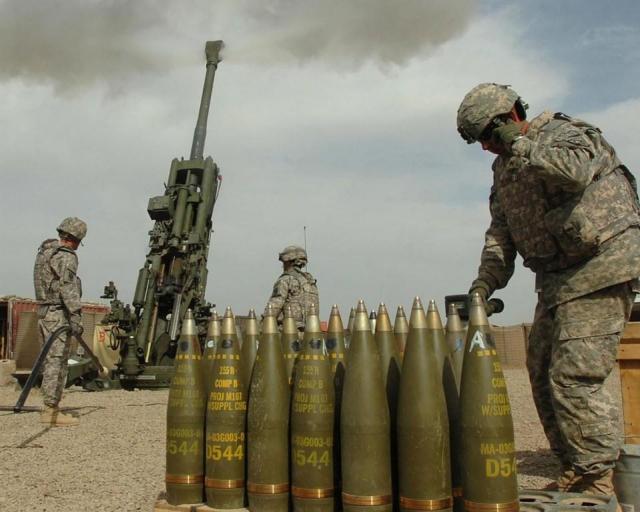As Congress continued to debate this year’s budget, striving to avoid a federal shutdown, the Army’s budget deputy paused to explain that the service’s proposal for fiscal year 2012 will continue to focus on sustaining the volunteer force.
Lt. Gen. Edgar E. Stanton III, the Army’s military deputy for budget, spoke to members of the Association of the U.S. Army at an Institute of Land Warfare breakfast, March 6.
“Interestingly enough, we’re in the defense and justification of this budget request with the hill, but we remain unsure of what the outcome for ’11 is,” he said. “In a perfect world, you would know what you’re doing in ’11 as you build ’12.”
Stanton was referring to the secretary of the Army, chief of staff and others testifying before the House and Senate Armed Services committees and Appropriations committees to outline the fiscal year 2012 budget request.
The bulk of that request — $60.6 billion of the $144.9 billion — amounting to 42 percent of the base budget for fiscal year 2012, goes toward military personnel, Stanton said. He said this sustains not only the active force, but also the National Guard and Army Reserve, and it covers retiree health care and a variety of incentives to support the all-volunteer force.
Also included in the military personnel part of the budget request is a military pay raise of 1.6 percent, with increases in housing allowance of 3.1 percent and subsistence allowance of 3.4 percent.
Additionally, $1.7 billion is slated for vital Soldier and family programs that provide a full range of essential services such as the Army Campaign Plan for Health Promotion, Risk Reduction and Suicide Prevention; Sexual Harassment/Assault Response and Prevention and Comprehensive Soldier Fitness.
The budget request also includes the Residential Communities Initiatives program, which provides quality, sustainable residential communities for Soldiers and their families living on-post. For those residing off-post, the budget calls for continued funding to offset out-of-pocket housing expenses.
“I don’t think really it’s a revelation to anyone here that we’re a little bit different from our sister services in that the majority of the Army’s budget goes to MILPERS, whereas the other services are a bit higher than we are on their investment accounts in RDA,” Stanton said, referring to research and development.
“We have sustained what have been the secretary’s and chief’s priorities, the same priorities as in last year’s budget and that is taking care of our people, sustaining this great volunteer force, resetting the force, training and equipping and modernizing them to prepare for whatever tomorrow’s contingencies might be,” he said.
The budget includes $900 million for recruiting and advertising and initial training for Soldiers; and provides for funding for 73 brigade combat teams, 98 multi-functional support brigades, and 133 functional and support brigades.
The remainder of Army’s fiscal year 2012 budget breaks down to $45.2 billion (31 percent) for operations and maintenance; $22.1 billion (15 percent) for procurement; $9.7 billion (seven percent) for research, development, test and evaluation, known as RDET&E; and, $7.2 billion (five percent) for other.
Outside of the base budget, the Army also asked for an additional $71.1 billion to fund overseas contingency operations, known as OCO, down from the $101 billion request for fiscal year 2011.
“This is purely a function of the drawdown in Iraq and the projections that we’ve made for Afghanistan,” Stanton said. Operations and maintenance make up 63 percent of the OCO request and include everything from movement to/from theater as well as sustainment and operations tempo while in theater, he added.
The investment piece of the budget request is a combination of procurement and RDET&E or about 23 percent of the total. A third of the $22 billion is for aviation which he said continued to be the most expensive investment in the Army. He added that the service was investing in all its platforms, Chinook, Black Hawk and Lakota helicopters, along with unmanned aerial systems.
The Army will continue modernization of WIN-T (the Warfighter Information Network – Tactical), the WIN-T Joint Tactical Radio System Increment 3 and the Ground Combat Vehicle under the RDT&E part of the budget request. The remaining $7.2 billion for other is largely for military construction and the Joint IED Defeat Organization.
The budget request for fiscal year 2011 amounted to $143.4 billion, while for fiscal year 2012 the base request tops at out at $144.9 billion.
“Comparison of the two, there’s a little bit of growth, but that’s essentially inflation so there’s not any real growth in the budget,” he said. “We’ve finished BRAC (Base Realignment and Closure), and we’ve completed most of the construction associated with ‘Grow the Army’ and the repositioning of our force around the globe.”










